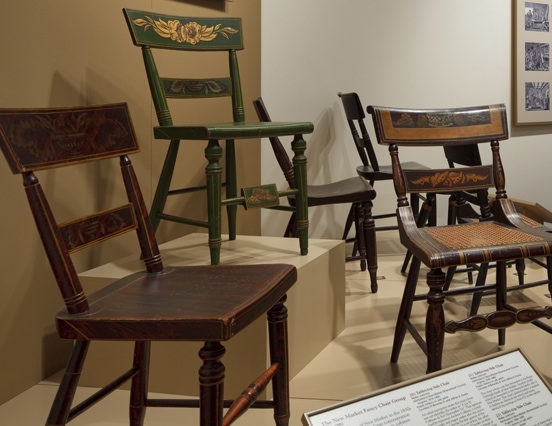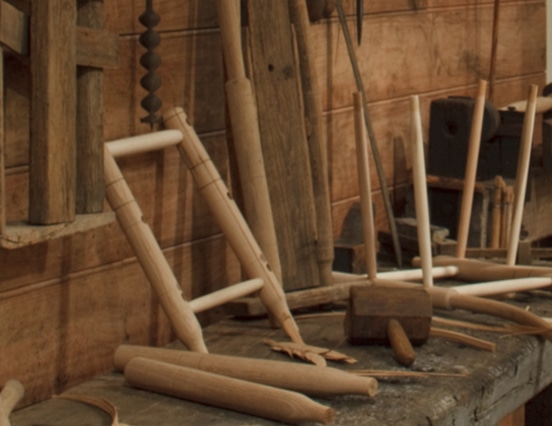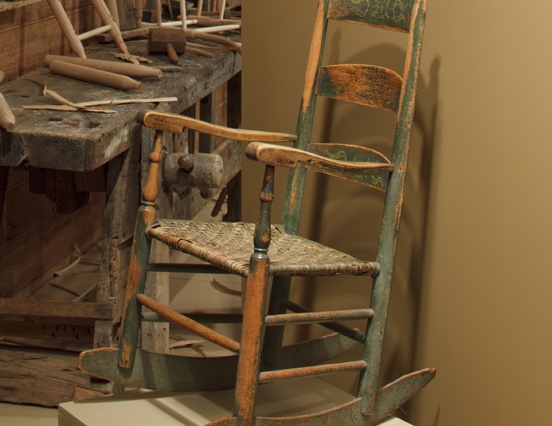December 18, 2009 – June 20, 2010
By 1800, the Shenandoah Valley was home to many craftsmen of German, Swiss, English, Irish, and Scottish descent. Using familiar European craft traditions, these craftsmen made durable and comfortable chairs, but they were also influenced by fashionable designs from cities like Philadelphia and Baltimore. Their creative blending of old and new ideas resulted in distinctive chair styles that speak of the Valley’s diverse cultural heritage and are called “vernacular.”
Assembled with 43 chairs on loan from nine different private collections, most of which had never been on public display, Come In and Have a Seat was the first exhibition devoted to the study of nineteenth-century Shenandoah Valley vernacular chairs.
Visitors had the opportunity to learn about ladder-back, Windsor, and fancy chairs made in the late 1700s and 1800s and see the visual variety they present. The exhibition also included the most exuberantly decorated early Valley chair that is known to exist. Interactive elements incorporated into the display included reproduction Shenandoah Valley chairs where visitors could “have a seat,” large-scale chair puzzles, and a re-creation of an 1850s chair shop—featuring authentic tools and furnishings from the Adam Kersh Shop of Augusta County, Virginia (active ca. 1860–1905), and on loan from the Frontier Culture Museum in Staunton, Virginia.
Jeffrey S. Evans, noted scholar and collector of Shenandoah Valley furniture, pottery, and decorative arts, served as guest curator for this exhibition. The MSV published a catalogue in conjunction with this exhibition. Titled Come in and Have a Seat: Vernacular Chairs of the Shenandoah Valley, the catalogue was authored by Evans and featured essays by contributing writers Associate Professor of English & American Studies at Bridgewater College Scott H. Suter, PhD, and Winchester chair expert W. Wayne Anderson.
This exhibition was funded in part by a grant from the Virginia Foundation for the Humanities.


